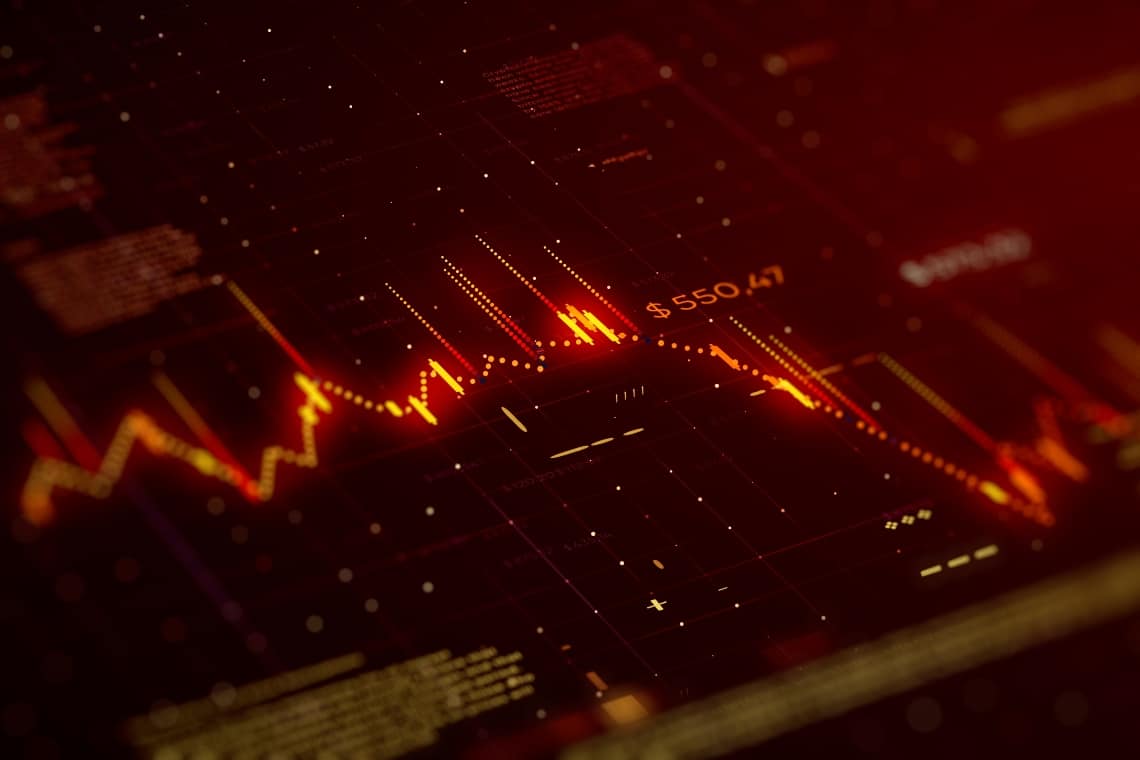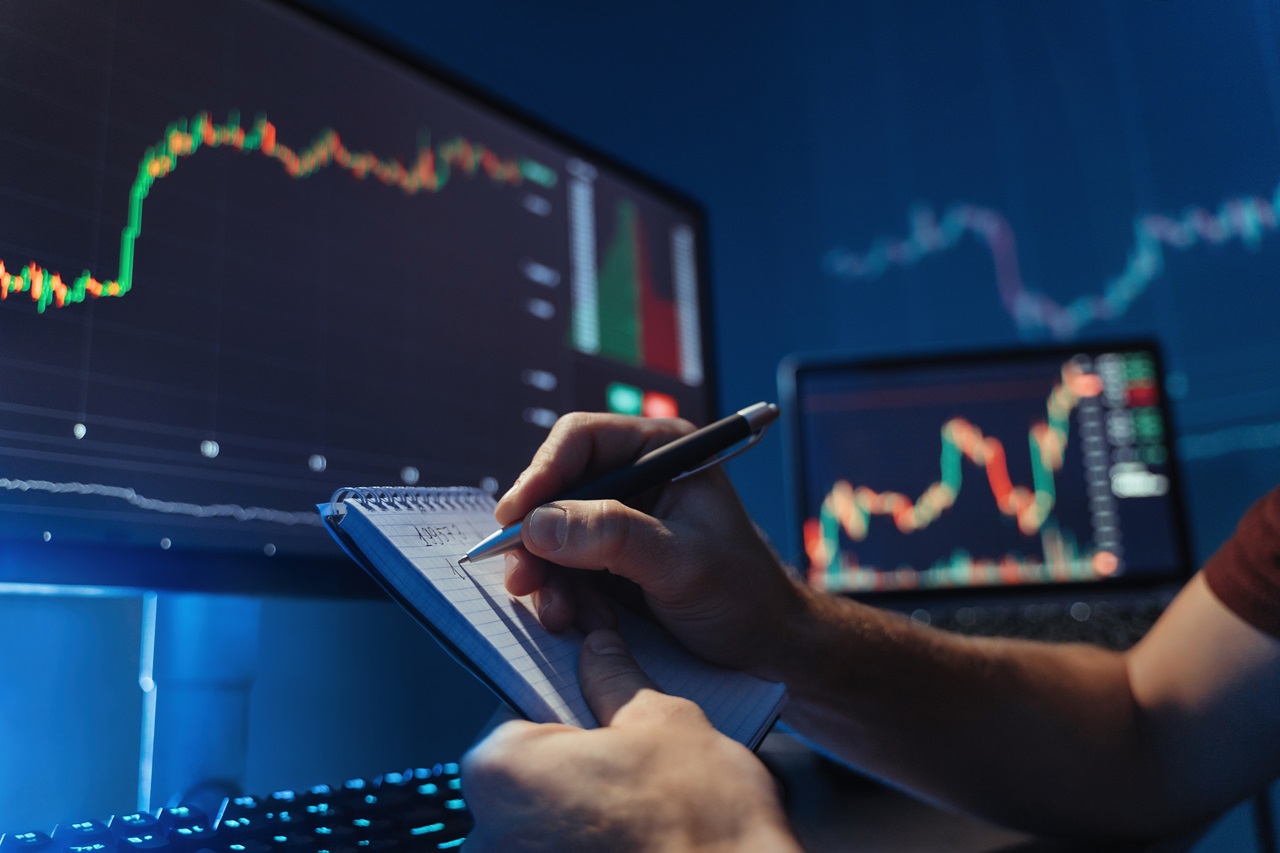
In today's digital age, stepping into the world of cryptocurrency trading can seem like navigating a labyrinth without a compass. But what if we told you that there's a tool to help steer your decisions, paving the way for informed and profitable investments? Welcome to the power of quantitative analysis. As an investor, learning to harness the potential of quantitative analysis can give you an upper hand in understanding the trends, patterns, and predictability of the crypto market. Let's dive into discovering why quantitative analysis is such a crucial tool in crypto trading.
The Basics of Quantitative Analysis in Crypto Trading
Quantitative analysis, at its core, is all about making sense of numerical data. In the world of crypto trading, this translates to pouring over historical price data, trading volume, market trends, and much more. Remember, when you're dealing with the volatile world of cryptocurrencies, data is your most reliable ally.
Quantitative analysis starts with data collection. Every second of every day, the cryptocurrency market generates buckets of data. Harnessing this data, and more importantly, understanding it, is the first step of your quantitative journey.
But gathering reams of data is just the first step. The real magic happens when you start analyzing the data. What patterns can you see? Can you spot any regular trends or anomalies? Are there any correlations between different data sets? It’s almost like being a detective, but instead of solving a mystery, you’re trying to predict the direction of the cryptocurrency market.
Note: Conducting quantitative analysis isn’t just about crunching numbers. You’re also interpreting the results and weaving them into your broader trading strategy. Are the results suggesting a bullish trend? Or is a bear market more likely? These insights can inform your decisions about when to buy and sell.
Various Techniques of Quantitative Analysis
There are a vast array of techniques to conduct a thorough quantitative analysis, some of which include:
- Technical Analysis: This involves studying the price and volume data of a particular crypto and using statistical methods to predict future trends.
- Statistical Analysis: Using statistical methods to analyze data, traders can identify patterns that may indicate future price movements.
- Algorithmic Trading: Algorithms are used to execute trading orders at optimal times with the goal of generating profits at a speed and frequency that would be difficult for a human trader.
- Machine Learning : Traders use algorithms and predictive models to analyze historical data and predict future price movements.
Keep in mind that the method you choose will depend on your individual trading goals, risk tolerance, and time commitment.
It's also important to remember that no method is foolproof. Cryptocurrency markets can be unpredictable, and even the most rigorous quantitative analysis won't always predict their movements correctly. But by relying on data, rather than emotions or hunches, you're much more likely to make informed and rational trading decisions.
The Role of Data in Crypto Trading
When talking about data's role in crypto trading, it is pivotal to state that without data, quantitative analysis would be practically impossible. Data is essentially the backbone of any crypto trading system that utilizes quantitative analysis, which is mined and processed to make unbiased, informed decisions.
Types of Data in Crypto Trading
So, what types of data are essential for quantitative analysis in crypto trading?
- Historical Price Data: Generally, quantitative methods require a large set of historical price data. This data serves as the basis for most analytical models and strategies, providing substantial insights into a crypto asset's past performance patterns.
- Live Price Data: Real-time data, including both price and volume, is crucial for executing trades based on the most current market information. This keeps your trading strategy agile and up-to-date.
- Order Book Data: Order book data contains information about all active buy/sell orders for a specific cryptocurrency, contributing to market depth understanding and helping to predict short-term price movements.
- Social Media and News Data: In the hyper-connected world of crypto, market sentiment can be drastically influenced by news and social media buzz. It is not uncommon for traders to liken trends on platforms like Twitter with cryptocurrency price fluctuations.
These mentioned data types, and others, fuel the analytical engine that drives quantitative crypto trading. They feed into the models and algorithms that generate actionable insights for informed trading decisions.
Data Quality and Quantity in Crypto Trading
When it comes to using data in cryptocurrency trading, it's worth noting that both quality and quantity matter. The more data you have and the higher its quality, the more accurate and robust your quantitative analysis will be.
Quality refers to the accuracy and reliability of the data. Biased, incorrect, or incomplete data can lead to faulty analyses and poor trading decisions.
Quantity, on the other hand, refers to the volume of data available for analysis. More data allows more comprehensive backtesting, greater model accuracy, and the ability to capture more complex relationships within the data.
Remember, adequate and high-quality data is crucial. It's the fundamental raw material that transformed by algorithms and models into actionable insights for effective crypto trading decisions.
Technical Analysis: A Key Component of Quantitative Analysis
Technical analysis, a vital aspect of quantitative analysis, leverages statistical trends gathered from trading activity, such as price movement and volume. While it doesn't assure future results, it provides a statistical framework to gauge market sentiment, making it a critical tool for informed decision-making processes in cryptocurrency trading.
Key Principles of Technical Analysis
Technical analysis operates on a few primary principles when applied to cryptocurrency trading:
- Market Action Discounts Everything: This principle posits that all market variables, including geopolitical events or economic data, are factored into the asset's price. Thus, the focus is on price analysis instead of the factors causing the change.
- Prices Move in Trends: Often, in financial markets, prices move in trends—upward, downward, or sideways. Identifying these trends and riding them is a critical skill for traders.
- History Tends to Repeat Itself: Technical analysis uses historical price data to identify potential future price movements. The premise here is that market psychology is constant, resulting in similar market reactions to similar situations.
Popular Technical Analysis Tools in Crypto Trading
Traders leverage a variety of technical analysis tools to forecast potential price movements. Below are some of the popular tools used:
- Candlestick Charts: These charts offer a visual representation of price action in a specified timeframe, allowing traders to view past performance and forecast potential price movements.
- Support and Resistance Levels: These identify the price levels at which an asset's price will struggle to rise above (resistance) or fall below (support).
- Technical Indicators: These include a host of statistical indices like Moving Averages, Relative Strength Index, and MACD, which help gauge momentum, trends, or market volatility.
The Limitations of Technical Analysis
While technical analysis is a potent tool, it's important to recognize its limitations in the realm of cryptocurrency trading. It's not a magical crystal ball that predicts the future with certainty; rather, it's a statistical tool that, when combined with other types of analysis such as fundamental analysis, can help traders make more informed decisions.
Moreover, cryptocurrency markets are unique and distinct from traditional financial markets. They're influenced by a different set of factors—like technological advancements, regulatory news, or even social media influence—that technical analysis alone may fail to consider.
Beyond acknowledging these limitations, the key to successful trading lies in continuous learning, adaptation, and a well-rounded approach that combines technical analysis with quantitative and qualitative assessments.
The Importance of Statistical Analysis in Crypto Trading
Statistical analysis plays a critical role in the world of crypto trading. Much like in the traditional financial markets, it provides traders with valuable insights that can help them make informed decisions. Whether you're a seasoned trader or a beginner still learning the ropes, understanding how statistical analysis works in crypto trading can give you a vital edge.
The Application of Statistical Analysis in Crypto Trading
On a basic level, statistical analysis in crypto trading involves using historical price data to predict future price movements. This is done by establishing patterns and trends within the data and utilizing them to forecast potential price changes. These methods can tell you not only which cryptocurrency is likely to rise or fall, but even when such movements could occur.
Let's break it down a little further:
- Descriptive Statistics: Descriptive statistics gives traders a summary and a blueprint of past performance. It provides key insights, including mean, median, range, and standard deviation of prices, which are often used as a baseline to understand market conditions.
- Inferential Statistics: As the name suggests, inferential statistics involves making inferences about the future based on past data. This can include predictive modelling of price movements, confidence intervals, hypothesis testing and more.
- Correlation and Causation: Traders use correlation and causation principles to understand the relationship between different variables. If two cryptocurrencies are strongly correlated, a movement in one could signal a similar movement in the other. Recognizing these relationships can lead to strategic trading decisions.
Using Probability Theory in Crypto Trading
Probability theory is another key aspect of statistical analysis. It provides traders with a mathematical way to assess the likelihood of a certain outcome occurring. This tool can be particularly useful in situations with high uncertainty, such as in volatile crypto markets.
By using probability theory, a trader could determine, for example, the probability of a certain coin's price rising over a particular period. These calculated probabilities can then guide investment decisions by illuminating the potential risks and rewards of certain trades.
Decoding Market Sentiments with Bayesian Analysis
Bayesian analysis is a powerful statistical technique that enables investors to incorporate market sentiment into their strategies. This method combines prior knowledge with new data to create posterior outcomes. In the context of crypto trading, if the market sentiment is bullish, it is viewed as evidence that the prices will rise, and traders can adjust their strategies accordingly.
In conclusion, statistical analysis is an essential tool in the arsenal of crypto trading strategies. By helping traders to forecast price movements, assess risk and understand market dynamics, it lays the groundwork for informed decision-making and successful trading strategies.
Quantitative Models and Algorithms in Crypto Trading
Quantitative models and algorithms play a pivotal role in crypto trading. Every professional crypto trader should understand how these tools work and how to use them effectively to optimize potential returns. These automated methods often take into account an array of factors that human traders may overlook. So, let's dive a little deeper.
Difference between Quantitative Models and Algorithms
First off, it's important to clarify what we mean by 'quantitative models' and 'algorithms' in the context of crypto trading. Quantitative models are mathematical representations of real-world situations. In the world of crypto trading, these models depict the various factors that impact cryptocurrency prices and how they interact with each other. On the other hand, algorithms are sets of rules or instructions that dictate how trading should be done. They inform decisions such as when to buy or sell, based on mathematical calculations and market analysis.
Usage of Quantitative Models
When utilized correctly, quantitative models can provide significant advantages to crypto traders. They allow for better understanding of market trends, predict future price movements with reasonable accuracy, and enable traders to establish and implement a disciplined trading plan. They are typically used in conjunction with trading algorithms, creating a powerful system for reaping profits from crypto market trends.
Workings of Trading Algorithms
Trading algorithms work by applying a set of predefined rules to make trading decisions. When specific conditions are met, as per the rules, the algorithm automatically places the trade. This can be incredibly useful in the fast-paced world of cryptocurrency trading, where prices can skyrocket or plummet within moments. Algorithms bring objectivity into trading, reducing emotional interference and providing consistency in trading actions. They also offer the ability to 'trade while you sleep', taking advantage of price movements across different time zones.
Examples of Quantitative Trading Algorithms
There are myriad trading algorithms one could use in crypto trading. Here are few of them:
- Momentum Strategies: These algorithms buy assets that have been performing well, with the assumption that they will continue on this trajectory. They sell assets that have been underperforming, anticipating further decline.
- Mean-Reversion Strategies: This strategy operates on the principle that prices often 'return to the mean'. If a price has significantly deviated from the historical average, the algorithm will assume that the price will regress back to the mean.
- Statistical Arbitrage Strategies: These algorithms exploit pricing inefficiencies between related financial instruments.
To sum up, the combination of quantitative models and trading algorithms create a powerful toolkit for crypto traders. By offering insightful analysis, making rational trading decisions and capitalizing on market trends, they ethically boost a trader's chances of success in the unpredictable world of cryptocurrency trading.
Risk Management Strategies in Quantitative Crypto Trading
When venturing into the highly volatile world of cryptocurrency trading, risk management holds undeniable significance. By incorporating quantitative analysis into your risk management strategies, you can identify potential investment risks, assess the potential impact, and make informed decisions to mitigate these risks effectively.
Establishing a Risk-Reward Ratio
To begin with, establishing a risk-reward ratio is a fundamental step. This quantitative measure provides a clear illustration of the potential reward for every unit of risk taken. It's a vital tool for assessing whether a potential trade or investment is worth the inherent risk. As an example, if your risk-reward ratio is 1:3, it signifies that for every possible loss unit, there is a potential win of three units.
Setting Stop Loss and Take Profit Levels
Equally essential in the risk management equation is setting 'stop loss' and 'take profit' levels. In the realm of crypto trading, a stop loss order is your safety net - it automatically sells your crypto when the price falls to your predetermined level, hence limiting your losses. On the flip side, a take profit order is initiated when your crypto hits a specific price, freeing up your profits before any price reversal occurs. Both these strategies serve to significantly reduce risk exposure in the volatile crypto market.
Diversification: Spreading Your Investment
In trading and investing, diversity is strength. An eloquent way to mitigate risk is to spread your investment across different cryptocurrencies. A portfolio diversified in this manner is less likely to be severely impacted by the fluctuation of a single cryptocurrency, therefore offering a safeguard against systemic risks inherent to the crypto market.
Position Sizing: Balancing Potential Gains and Losses
Lastly, but most certainly not least, position sizing plays a crucial role in risk management. This involves deciding what percentage of your portfolio should be invested in a particular trade. By allocating your capital effectively, you can balance potential gains against potential losses. Remember, the aim is to not put all your eggs in one basket. Disciplined position sizing is a tested method to keep you in the game for longer, even when some of your trades are not successful.
Remember, risk management isn't about avoiding risk altogether. Instead, it's about understanding, controlling and using risks to your advantage. By employing these quantitative risk management strategies, you can navigate the crypto trading landscape with awareness and caution, making decisions that align with your overall trading objectives and risk tolerance.
The Role of Machine Learning in Crypto Trading
Ever wondered how machine learning enters into the realm of quantitative analysis in crypto trading? Well, it is quickly becoming a vital player. Machine learning, a sub-discipline of artificial intelligence, facilitates the application of exclusive algorithms that learn from data and perfect their performance in a self-regulating manner. The seamless integration of machine learning into the crypto trading domain offers several benefits which we explore below.
Pattern Recognition and Trend Prediction
One of the most valuable benefits of machine learning in trading is its aptitude to recognize patterns and trends that the human eye might overlook. Machine learning models can be trained to understand and monitor the historical data of various crypto markets, detect recurring patterns, and predict future trends. These predictive models can provide traders with valuable insights and key decision-making signals, which potentially can lead to improved profitability.
Improved Trading Speed and Efficiency
In the high-speed, continuously fluctuating world of cryptocurrency trading, every second counts. Machine learning, when combined with automated trading systems, allows for instant data processing, quick decision making, and timely execution of trades. This speed can often be a crucial determinant in successful trades in volatility-driven markets.
Personalized Trading Algorithms
Machine learning not only fosters efficiency but is also a catalyst in the development of personalized trading algorithms. These algorithms, enhanced through constant learning, can adjust themselves according to a trader’s style and preference, delivering customized strategies and trading signals thus catering to individual trading needs.
Reduced Risk of Human Errors
Given that cryptocurrencies operate in a somewhat complex landscape, human errors can be costly, both to the investor's wallet and their mental peace. Machine learning has the potential to reduce the risk of these errors by taking charge of the data-crunching tasks and delivering precise trading signals. In a way, it can act as a safeguard, protecting traders from costly oversights.
In conclusion, machine learning provides a broad variety of applications in quantitative crypto trading. With advanced pattern recognition, unrivaled speed, personalization, and error reduction capabilities, it has become an indispensable feature of intelligent trading systems.
Backtesting and Performance Evaluation in Quantitative Crypto Trading
Backtesting is a crucial part of quantitative analysis in crypto trading. It is the process of testing a trading strategy on relevant historical data to ensure its viability before the trader risks any actual capital. A key benefit of backtesting is the ability to measure a strategy's performance in different market conditions and timeframes. This information helps drive informed decisions in actual trades.
Why is Backtesting Essential in Crypto Trading?
Regular backtesting allows you to understand the potential of your trading strategy and identify any necessary adjustments. With each result, you get first-hand evidence of how the strategy will perform during different market events and periods.
- Performance Evaluation: Backtesting allows for an objective performance evaluation of a trading strategy. If it proves consistently profitable on historical data, it increases the odds that it'll work in the future.
- Optimization: Backtesting helps you to tune your strategy by identifying non-profitable trades early. It guides in adjusting stop losses, profits taking points, and trading size to optimize potential benefits.
- Risk Assessment: Through backtesting, you can calculate potential drawdowns and compare them against expected returns. These insights provide a clear understanding of the risk-reward potential of the strategy.
- Anomaly Detection: Backtesting helps in identifying and addressing anomalies that could hinder the efficient execution of a trading strategy. It gives a chance to test potential fixes before implementation.
The Process of Backtesting in Crypto Trading
The backtesting process can be broken down into several steps:
- Data Collection: The first step involves gathering historical data on the chosen cryptocurrency.
- Strategy Definition: Next, you must clearly define the rules of your trading strategy. All conditions for entering, exiting, and managing trades should be established.
- Backtesting: This is where you apply your strategy to the historical data. The backtest will provide you with a series of trades, and the resulting outcome of each.
- Performance Analysis: Analyze and measure the performance of your strategy. Various metrics, such as the average win rate, profitability rate, drawdown, and risk-reward ratio, can give valuable insights.
- Optimization: According to the performance analysis outcomes, if necessary, optimization of the strategy may be needed.
Limitations of Backtesting
Though backtesting is an essential tool in quantitative analysis, it's crucial to understand its limitations. The main issues revolve around over-optimization, curve-fitting, and the availability and accuracy of historical data. A backtest result may not completely account for real-time variables such as slippage and liquidity levels. Also, past performance is not always indicative of future results. Therefore, backtesting is not the only tool to be used but should be complemented with other risk management and analytical procedures.
The Future of Quantitative Analysis in Crypto Trading
As we look toward the future, it's clear that quantitative analysis will continue to play a pivotal role in crypto trading. With the advancement of technology and the increasing complexity of financial markets, the need for sophisticated, data-driven strategies is only expected to grow.
Tighter Integration of AI and Machine learning
Artificial Intelligence (AI) and Machine Learning (ML) technologies have made significant inroads in the realm of crypto trading. These technologies allow for the analysis of massive data sets at speeds human brains can't match. They can identify trends, predict market movements, and make trading decisions with a high degree of accuracy.
In the future, we can anticipate an even tighter integration of AI and ML in quantitative analysis. We might see more advanced algorithms capable of learning and improving over time, leading to more accurate and efficient trading strategies.
More Sophisticated Trading Algorithms
As quantitative analysis becomes more prevalent, we expect to see an increase in the complexity and sophistication of trading algorithms. These algorithms will not only be capable of analysing larger data sets but will also use more intricate methods to make trading decisions.
This progress may lead to the development of algorithms that can factor in multiple variables, consider various trading strategies, and even adapt to changing market conditions—all in real-time.
Increased Transparency and Regulation
As the crypto market grows in size and prominence, it's likely that new regulations will be introduced to increase transparency and protect traders. And with stricter regulations, quant methods that adhere to compliance will be crucial. Thus future will also see an uprise in the development of compliant quant models which will bring more robustness in the trading process.
Varying Investment Strategies
Lastly, as the field of quantitative analysis advances, investment strategies will continue to vary and become more complex. Traders will use quantitative data to identify and exploit opportunities in slower, high volume trades, and craft careful, calculated strategies for faster, lower volume trades. This diversification will provide more opportunities for gains and potentially limit losses.
In summary, the future of quantitative analysis in crypto trading is bright. It promises greater efficiency, accuracy, and sophistication in trading, paving the way for more informed and lucrative investment decisions.



